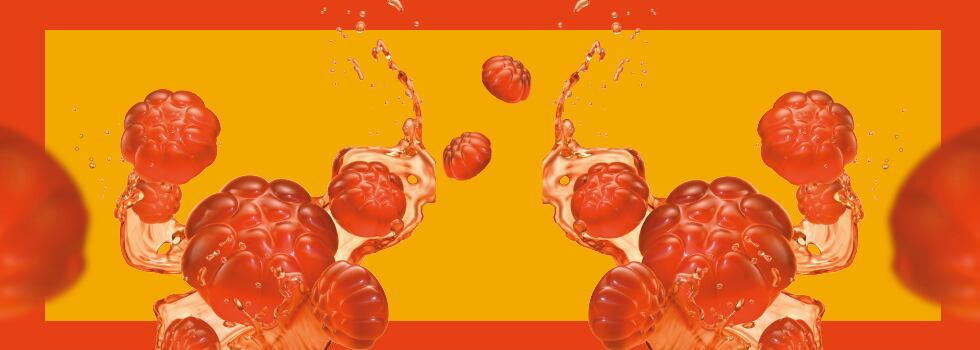Achieving sweetness naturally
Globally, consumers are realizing that sugar, a traditional ingredient that has been used in food, beverages and recipes, is causing health problems such as obesity and diabetes. It’s here where the food industry is committed to respond and find a solution to market necessities such as:
- How do we find alternative ingredients that don't cause health problems?
- How do we replace an ingredient that is used worldwide and that fulfills it's purpose?
- How do we replace an ingredient that produces energy, warmth and provides fun and delightful sensations?
For the gummy technology, this trend has been an inspiring challenge because sugar is the perfect ingredient to sweeten naturally but also provides the structure and texture that consumers acknowledge. Funtrition has faced the challenge of addressing our clients concerns and giving consumers the same sensorial experience, without sacrificing the natural characteristics of sugar. We want to share today how at Funtrition we are facing this challenge of bringing to consumers the same sensorial experience without compromising naturality and addressing our customers´ needs and concerns.
Global Gummy Market
The global market was valued in 13.9 billion USD in 2018 and it’s likely to increase because of the rise of a plant-based trend, because the gummy consumption is winning the race towards the chocolate industry and because of an increase in spending. On the other hand, consumers have directed their attention towards functional products that can provide different benefits besides offering a delightful taste. This results in an increase in the number of adults consuming gummies, a market dominated by consumers between 18 and 30 years of age. In this matter, the market has focused on gummies with vitamins, minerals and supplement additions. Likewise, there´s a strong interest in gummies with protein additions from different sources, whey being the most attractive one.
Other products in the market with great interest are organic & CBD gummies. The organic gummies market increase is due to the perception of the possible risks when consuming synthetic ingredients or “less natural” products used in the gummy market. This is reflected in the fact that 25% of consumers of indulging products look for natural ingredients. In the case of CBD gummies, the increase in the market is due to the use of cannabinoids to reduce stress, anxiety and improve sleep quality in its consumers. However, the increment in demand of products with reduced sugar or “healthy sugar” does exist, considering that the perception of consumers of honey or sweeteners like stevia or agave extracts are healthier than refined sugar. Particularly, since 2015 we observed that the use of allulose as “healthy sugar” has had a significative increment as a result of being an option with a low glycemic index.
Alternatives to Sweeten Naturally

Stevia:
Stevia, a zero-calorie sweetener, is known for being 250-300 times sweeter than sugar. Additionally, it is an extract of the Stevia Rebaudiana plant in the Southern Cone. This sweetener is composed of glucosides that are not metabolized by the human body, which is why it doesn’t provide calories or affects glucose levels in the bloodstream, making it a perfect substitute for people with diabetes. However, it’s not able to produce the gummy structure by itself, a very important property for gummy technology.

Polyols:
These are carbohydrates that are obtained industrially through the hydrogenation of sugar. The commonly used polyols in the industry are Sorbitol, Maltitol, Xylitol, Isomaltitol, Mannitol and Erythritol; used to substitute sugar, moisturizers and structure agents. Polyols protect your teeth from cavities, provide less calories than sugar and don´t affect glycemic levels in the bloodstream. This is why they are a perfect substitute for sugar. Polyols however, can´t be declared as natural, which is why they can´t be used if we want to have a natural product.

Allulose:
Allulose or d-psicose is a monosaccharide that is present in small amounts in wheat, fruit and other types of foods. It is possible to synthesize allulose through enzymatic epimerization of fructose into d-psicose. It is also a rare sugar composed of 70% sweet and provides only 10% of calories that sacarose provides. Unlike other sweeteners, this rare sugar gives the same sensorial and functional benefits as sugar. Also, it was found more attractive for the food industry when the FDA anounced in 2019 that unlike allulose is clasified as sugar, it is not metabolized like energy in the human body and it can be excluded from the amount of total and additional sugars in the nutritional statement.

Inulin and FOS:
Inulin is a storage carbohydrate that can be found in a variety of plants, vegetables and fruits like roots, figs, yacon, chicory, etc. It is composed by fructose chains called fructanos. The most studied and used fructanos within the food industry are inulin, oligofructose and fructooligosaccharides (FOS). Inulin does not metabolize by digestive enzymes of humans and animals because they are non-digestible carbohydrates.

Monk Fruit:
Also known as Lo Han Guo or Swingle fruit, monk fruit is a small fruit found in Southern China. This fruit has been used through centuries in Eastern medicine techniques for common colds and digestion. Currently, monk fruit extract is used as a sweetener in food and beverages containing mogrosides. Monk fruit extracts are 150-200 times sweeter than sugar and do not provide calories, however, they do contribute to the structure and texture of gummies. Mogrosides are not absorbed in the superior gastrointestinal tract.

Fruit concentrate:
The fruit concentrate, for example, apple juice or white grapes, are sweeteners commonly used to replace fat in low fat products since they retain water and provide volume to improve the appearance and the feeling of the product in the consumer’s mouth. Although it has a greater natural perception than syrups with high fructose content, the fruit concentrate (65% fructose) can have a greater fructose content than the rest of the high fructose syrups that are used in drinks like the HFCS (high fructose corn syrup), with 55% of fructose.

Miracle Fruit:
The Miracle fruit (Synsepalum Dulcificum) is a fruit tree native from Africa. It has the power of changing acid flavors into extremely sweet flavors through a substance called Miraculina that masks flavors fooling the taste buds to provide a different taste perception. This effect can last from 30 minutes to 2 hours with its intensity decreasing over time. It’s useful in foods that have acid after tastes to mask flavors like Stevia.
Trends impact
Reducing sugar in food and beverages is a complex process that requires reformulating challenges that compromise factors such as the type of product, the sweetener’s function, cost, quantity, supply, production and more. When creating a formula, it’s important to choose between decreasing sugar without replacement or decreasing sugar and replace the rest with zero-calorie sweeteners or alternate ingredients. Thanks to this, the use of alternate sweeteners has increased or decreased depending on the trend that impacts food categories. According to Mintel, in the candy category launch of November 2014 to October 2019, we can see that the use of artificial sweeteners has decreased while sweeteners like Stevia and Monk fruit have increased, concluding that there is a clear trend in natural product consumption.
At Funtrition, we know that the sweetening world is open to new materials and traditional foods such as acasia or cocoa, which are a source of fiber, FOS and ancestral sweeteners like monk fruit or miracle fruit.
The Sweetening Alternative of Funtrition Gummies
However, our gummies are traditionally made up of 65-75% sweeteners, where you would commonly find sugar, glucose syrup and tapioca syrup. In search of the nutritional and sensorial satisfaction of our consumers, Funtrition has created a variety of sugar substitutes by using different types of sweeteners like polyalcohol, inulin, FOS and stevia. With this, we want to sweeten our products without negatively affecting our customers health and without affecting the quality and shelf life of our products. We are continuously in search of the best raw materials and alternatives to sweeten our products to be able to achieve a healthy balance between nutrition, naturalness and an indulgent experience.
At Funtrition, we know that the sweetening world is open to new materials and traditional foods such as acasia or cocoa, which are a source of fiber, FOS and ancestral sweeteners like monk fruit or miracle fruit.







